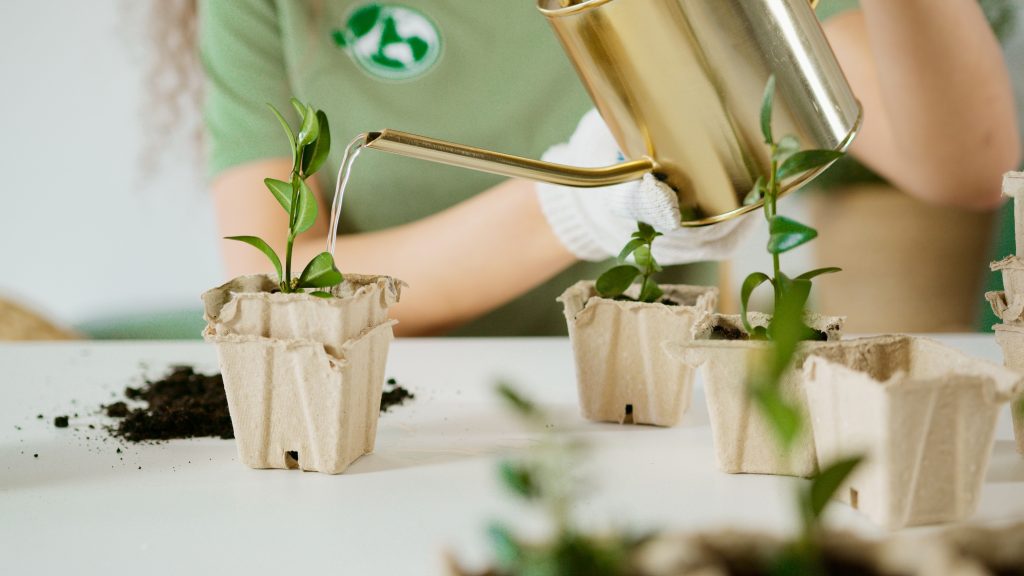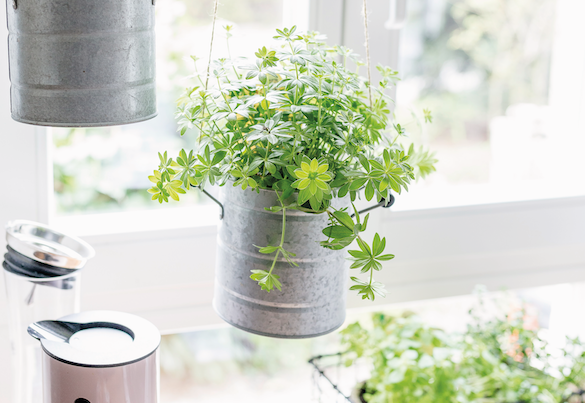Urban gardeners delving into the world of edible plants typically start with one essential group – herbs. Not only are they relatively easy to grow indoors, but herbs also provide a range of uses in the kitchen, making them ideal starter plants. They also come with a long list of benefits for both physical and mental health.
Unfortunately, this beginner-friendly gardening label has caused many new gardeners to kill one (or many) herb plants, often within a few days, wondering where it all went wrong. If you find yourself nodding at the notion and thinking ‘that’s me’, don’t consider yourself a black thumb just yet. While herbs can be grown indoors, they require very specific conditions to grow well – conditions far from the typical indoor plants you may know. Getting these conditions right will keep you growing and harvesting a range of herbs year-round without fear of being labelled a plant killer.
The Right Light
Sunlight indoors can be tricky, especially in kitchens. While you may consider your kitchen bright and airy, even a spot a few steps away from a window can be too dark for plants to grow effectively. When it comes to herbs that are typically grown in full sunlight, you’re facing an uphill battle growing indoors from the start. Direct sunlight is essential for herbs to thrive. They need at least six hours of it indoors, as the quality of sunlight is not as strong as it is outdoors. This is why herbs are considered the perfect windowsill plants, especially for north-facing windows. If you don’t have a sunny window in your kitchen, simply grow them in another part of your house that does, or invest in a grow light. It may not be as convenient as picking a sprig while you’re cooking, but it’s far better than having a dead herb, or no herbs at all.
The Right Temperature
Many popular herbs like rosemary, sage, and thyme originate from the hot, dry Mediterranean. Replicating these conditions will keep your plants growing vigorously, even indoors. In much of South Africa where temperatures remain high, particularly in summer, this shouldn’t be a problem. However, if you live in a region with icy autumn and winter temperatures, there are some extra steps to consider to keep your plant alive through the seasons. In excessively cold weather, move your herbs away from the windows at night and keep them in the warmest room in your house. Keep them away from cold draughts (or aircons in the summer), as this can have the same damaging effects. If they need a boost in winter, consider moving them outdoors into the sun during the day to soak up the heat.
The Right Watering
Indoor gardeners face two critical, plant killing problems – underwatering and overwatering. The same danger is present in indoor herb gardens, although some herbs may be more susceptible than others. For example, thin-leaved basil appreciates moist soil far more than the woody rosemary that can be left to dry out for a few days before another watering. Instead of watering on a schedule, check the soil with your finger and only water when the top layer is completely dry. This may change depending on your chosen herbs; mint, that prefers consistently moist soil, will need to be watered sooner. To stop your herbs sitting in water and succumbing to root rot, ensure your chosen pot or container has plenty of drainage. If using pot covers, always remove the herbs to water and only return them to the cover when all the excess water has drained.

The Right Herbs
With all these factors in mind, you may still struggle to get indoor herb growing right if you’ve chosen the wrong plants. Some herbs thrive when grown indoors, other lag behind. Mint and chives are the go-to for newbies or those with lower light conditions. With plenty of direct sun, rosemary, thyme and oregano will also grow well, albeit a bit slower than they would outdoors. Basil and coriander, needing tons of direct sun for strong, flavourful leaves, tend to die quickly indoors and are best kept on your patio in a full sun position.
Quick Tips:
- Don’t harvest too much of the plant at one time. As they grow slower indoors, your herbs will need time to bounce back. Never remove more than one third of the entire plant to keep it healthy.
- Herbs are best grown in separate pots to cater to their specific water and soil needs. Some with similar conditions, like rosemary and thyme, can live in the same pot, but others, like mint, should be kept on their own.
- Never use garden soil to plant herbs in pots. They need soil that is airy and well-draining – a mixture of potting soil, palm peat or coconut coir, and perlite is best.
Written by Madison Moulton
ALSO SEE: HOW TO GROW BEETROOT

